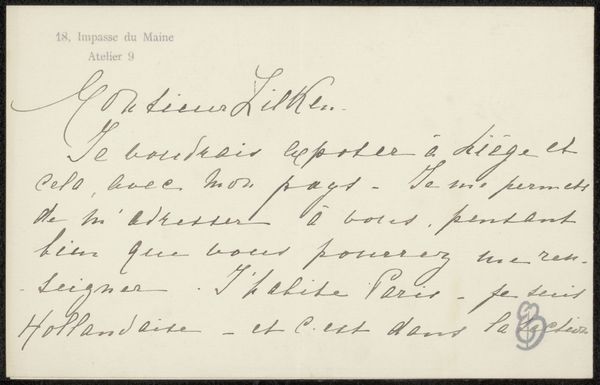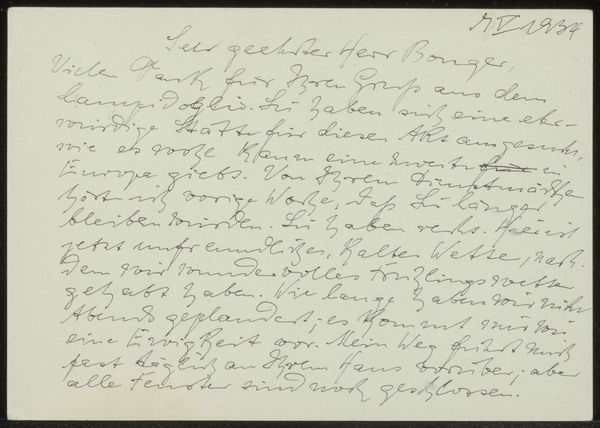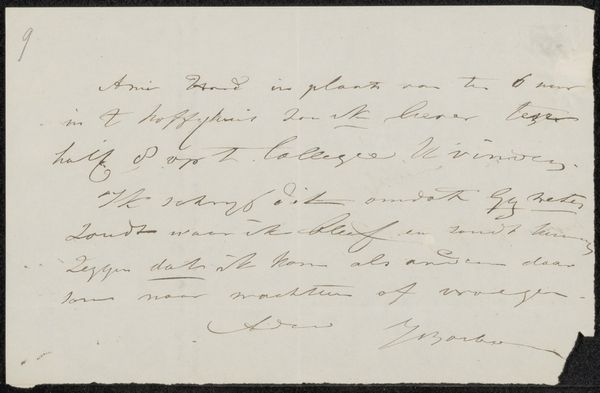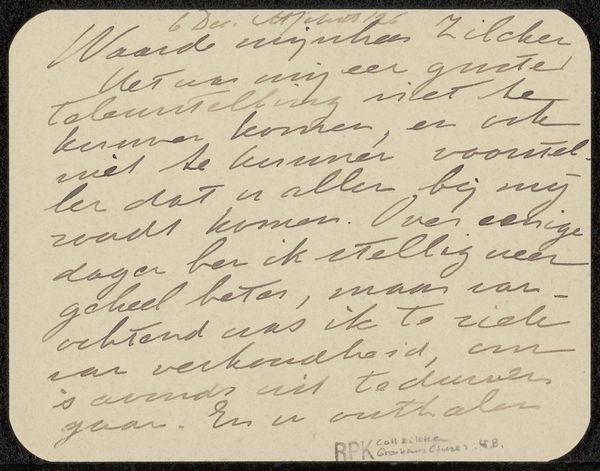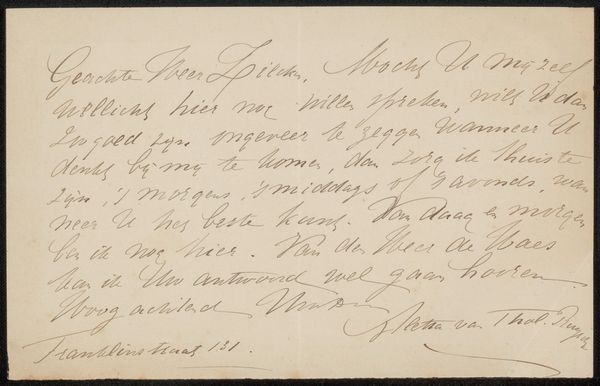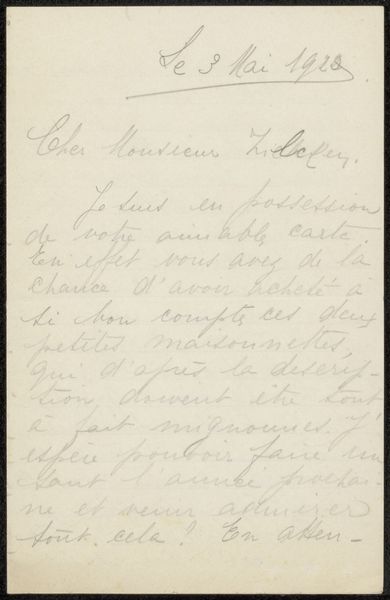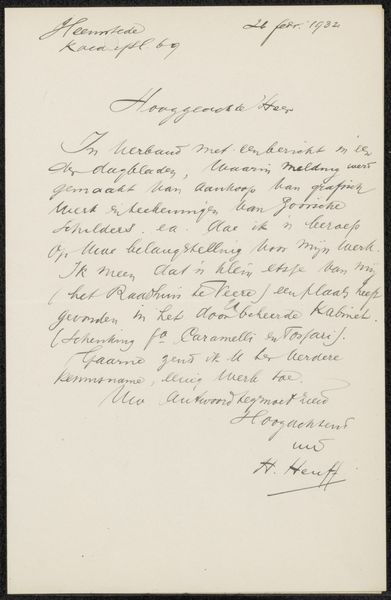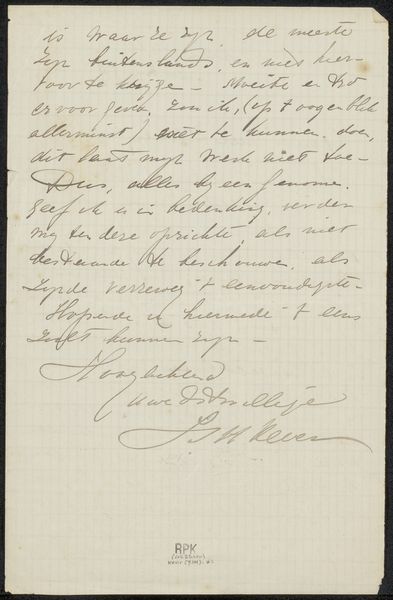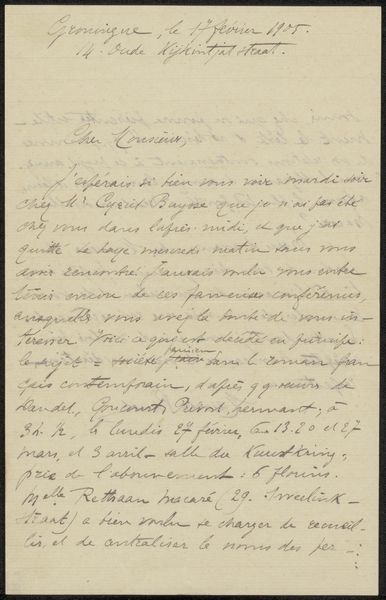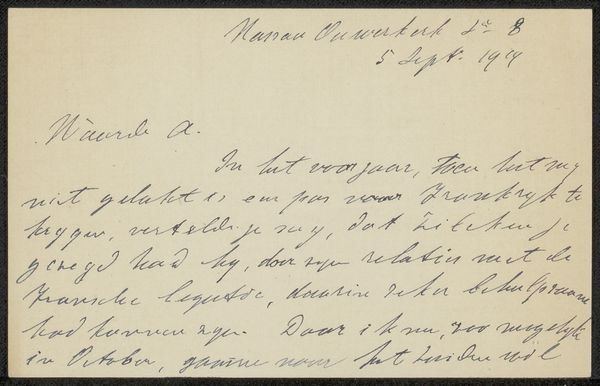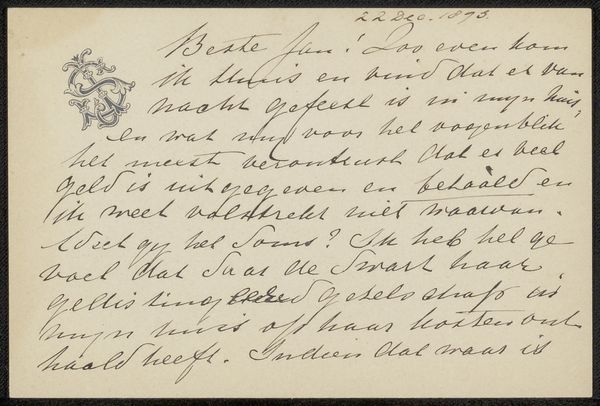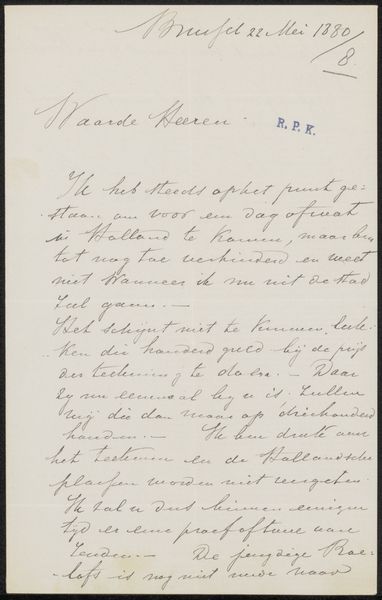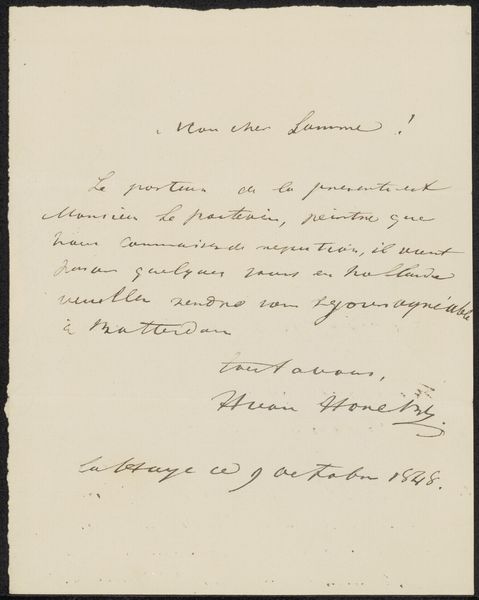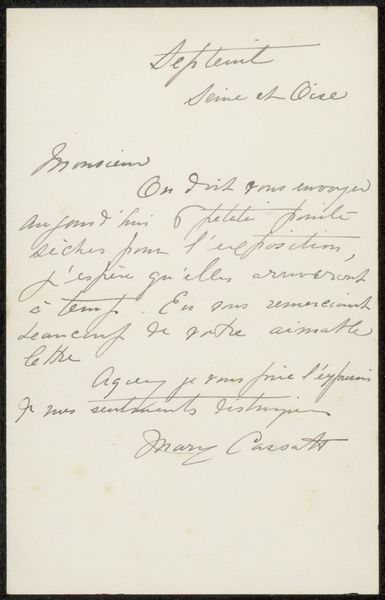
drawing, paper, ink, sculpture
#
drawing
#
paper
#
ink
#
sculpture
Copyright: Rijks Museum: Open Domain
Curator: Looking at this handwritten card from before 1930, titled "Prentbriefkaart aan de familie van Philip Zilcken," attributed to Charles-Henri Pourquet, one notes it is composed using ink on paper. Its texture seems remarkably personal, immediate. Editor: You know, it gives off a distinct vibe of invitation, almost pleading. I can almost feel the scratch of the pen on the paper. The handwriting is so deliberate but also urgent, like a hurried thought given physical form. What do you make of the French address up top? Curator: Given Pourquet’s focus on sculpture, the mention of artistic work on "Tombeve - Statue Furnirvire / Buste of Médaillon" is crucial, revealing an intention for the card to function as some form of solicitation—perhaps for entries into a competition, in his specific artistic domain of commemorative sculptures. Editor: It’s fascinating how it speaks to a bygone era. Today, we have emails and calls. Imagine receiving something like this now. Its vintage appeal is hard to ignore; that is an era before digital communication really sunk in. It connects directly to the personal life of the artist. Curator: And it begs us to consider questions about access. Who was privileged enough to receive such invitations, and whose artistry was overlooked because they lacked these connections? The art world, even back then, was shaped by a complex web of relationships. Editor: Definitely, you're nudging us to think more critically about what gets valued, who gets invited in, and why. Perhaps art and the life that brings art together cannot truly be separated, can they? I think that looking at an object that has such a history has opened me to such reflections. Curator: Indeed. This simple note reveals larger social and historical currents. Editor: Thanks; that insight gave the entire artwork extra appeal to me, too!
Comments
No comments
Be the first to comment and join the conversation on the ultimate creative platform.
